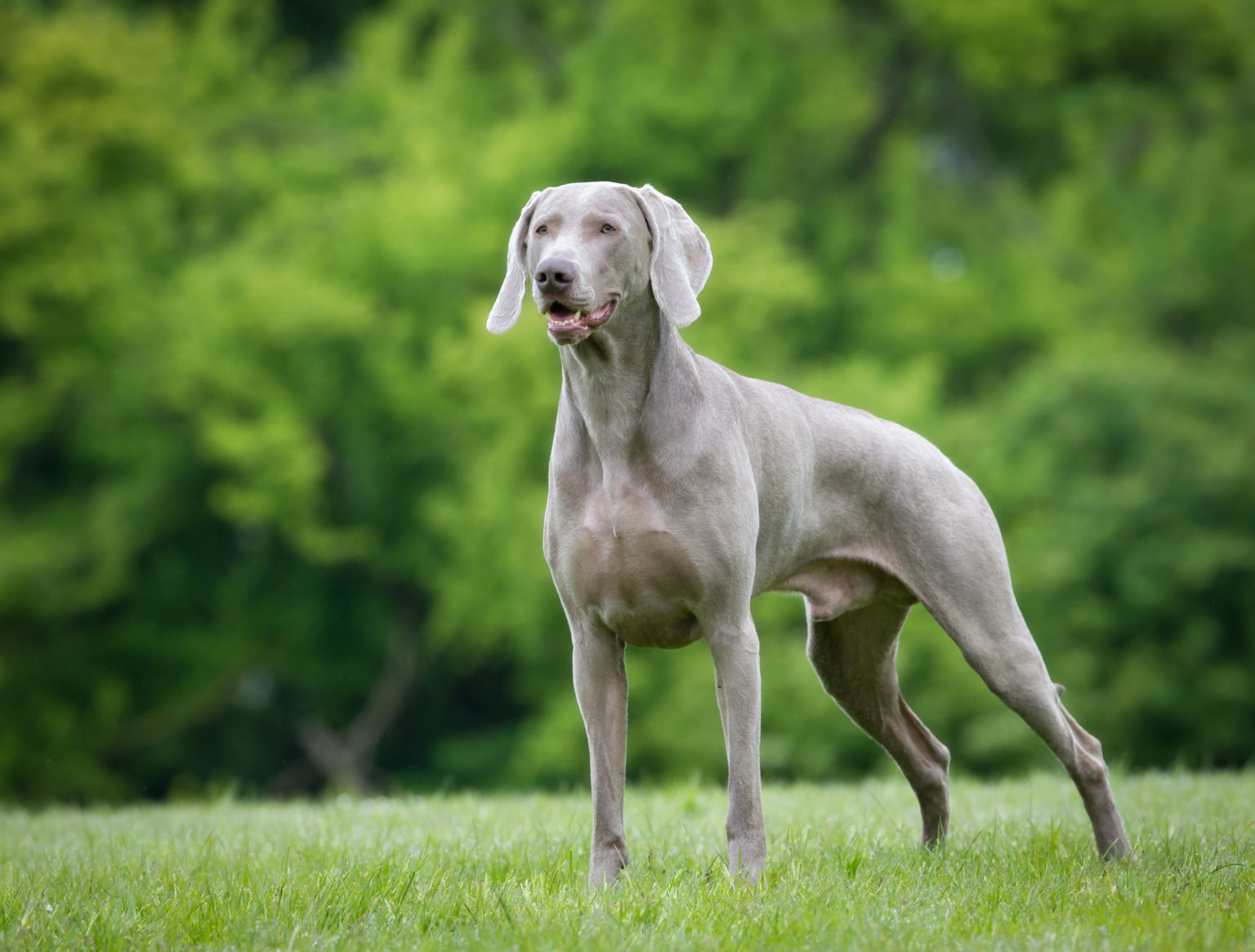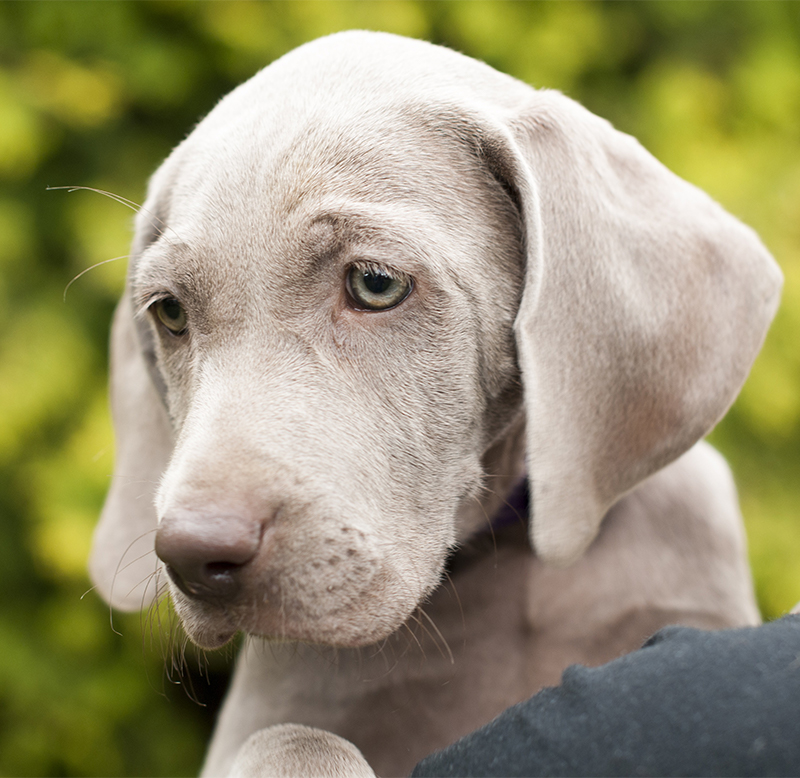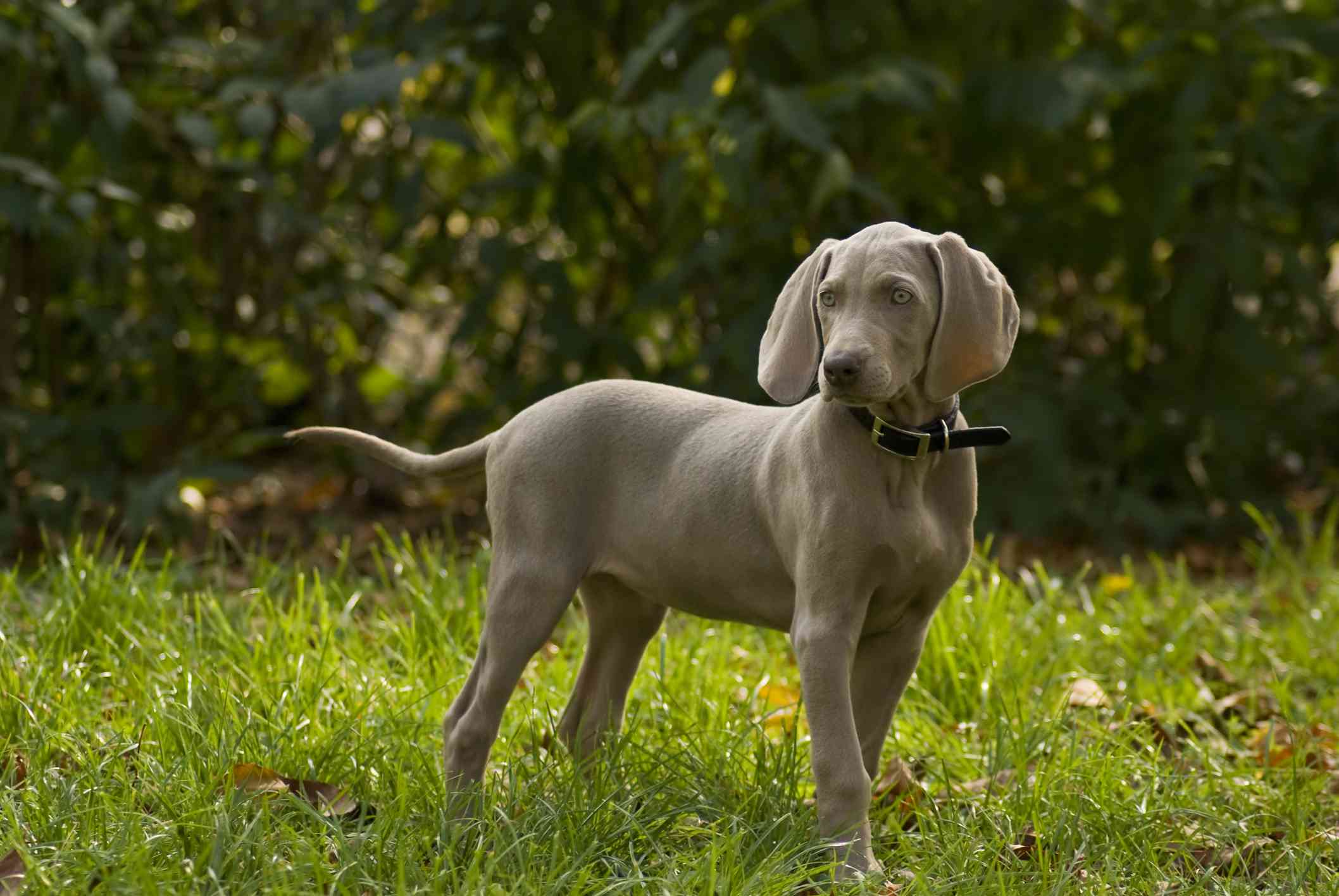
The Weimaraner is a strikingly elegant sporting breed with roots in 19th-century Germany. Named after the Grand Duke of Weimar, who championed the breed, the Weimaraner was originally bred for the nobility to hunt large game such as boar, deer, and bear.
As large game dwindled, the breed transitioned into an all-purpose hunting dog capable of tracking, pointing, and retrieving smaller quarry like birds and hares. The Weimaraner’s ancestry likely includes Bloodhounds, German Shorthaired Pointers, and other scent hounds, selectively bred to enhance tracking ability, endurance, and a distinctive sleek appearance.
The breed was introduced to the United States in the late 1920s, quickly captivating hunters and dog enthusiasts alike. It gained AKC recognition in 1943 and surged in popularity, partly thanks to famed photographer William Wegman, whose whimsical portraits of Weimaraners in costumes and human-like poses became cultural icons.
Known as the “Gray Ghost” for its unique coat and graceful movement, the Weimaraner has maintained steady popularity worldwide. It is especially beloved among:
• Hunting enthusiasts
• Active families
• Dog sports competitors (agility, obedience, field trials)
The Weimaraner boasts a sleek, muscular, and aristocratic frame with a distinct silver-gray coat.
• Height: 23–27 inches (58–69 cm)
• Weight: 55–90 pounds (25–41 kg)
• Build: Athletic, lean, and well-balanced
• Coat: Short, smooth, and sleek; very fine
• Color: Shades of silver-gray to mouse-gray (a hallmark feature)
• Head: Long with a moderate stop and strong jaws
• Ears: Long and pendant-shaped, set high and slightly folded
• Eyes: Light amber, gray, or blue-gray; expressive and intelligent
• Tail: Docked in some countries (to about 6 inches); carried horizontally or slightly upward
The Weimaraner is a highly energetic, intelligent, and devoted companion.
• Affectionate: Deeply bonds with family, thrives on companionship
• Energetic: Requires ample daily exercise and mental stimulation
• Protective: Alert and naturally wary of strangers (good watchdog)
• Intelligent: Quick learner but can be independent and strong-willed
• Sensitive: Responds best to consistent, positive training
Without adequate stimulation and companionship, Weimaraners may exhibit separation anxiety or destructive behaviors.

This breed is ideal for:
• Active owners who enjoy outdoor adventures and dog sports
• Families seeking a loyal, protective companion
• Individuals interested in hunting, tracking, or fieldwork
It may not suit:
• Owners with sedentary lifestyles
• Households where the dog is left alone frequently
• First-time owners unprepared for an energetic, assertive breed
Weimaraners require active engagement and firm, patient training.
• Exercise: High; at least 1–2 hours of vigorous activity daily
• Training: Early socialization and positive reinforcement essential
• Grooming: Low; weekly brushing, occasional baths
• Living Environment: Best in homes with a yard; secure fencing important
• Feeding: Balanced, high-quality diet suitable for active large dogs
Weimaraners are generally healthy with a lifespan of 10 to 13 years, though they are prone to:
• Hip dysplasia
• Bloat (gastric torsion)
• Hypothyroidism
• Progressive retinal atrophy (PRA)
Preventative vet care, proper feeding, and exercise routines are vital.

• Vizsla: Slightly smaller, rust-colored, more sensitive
• German Shorthaired Pointer: Denser coat with liver/white markings, broader head
• Doberman Pinscher: Similar size, but more protective and not a sporting breed
If you’re an active, experienced owner looking for a loyal, athletic companion with striking beauty and versatility, the Weimaraner is an excellent match.
Contact reputable breeders via national clubs like the Weimaraner Club of America or explore rescue groups. United Pet Club offers services such as universal microchip registry, pet passports, and training resources to support responsible ownership.